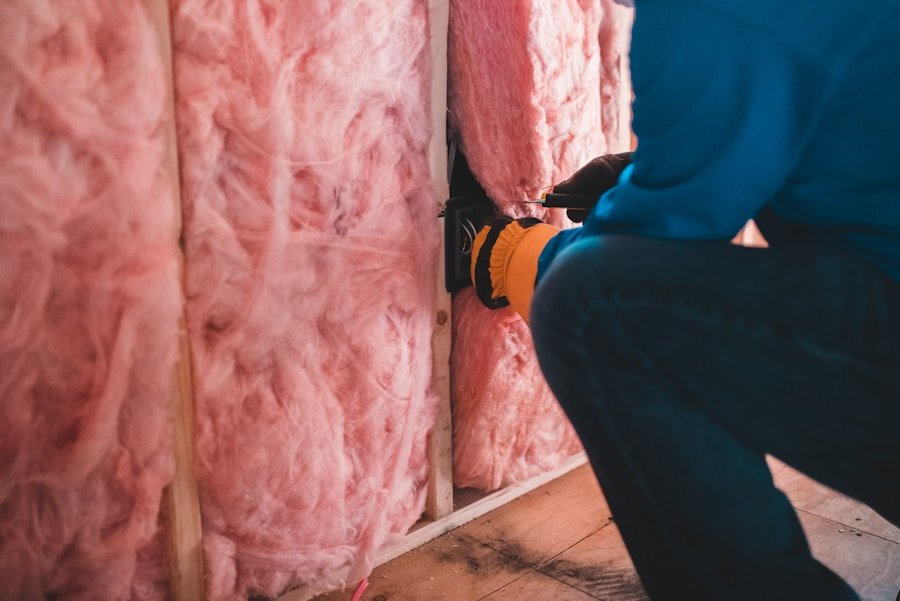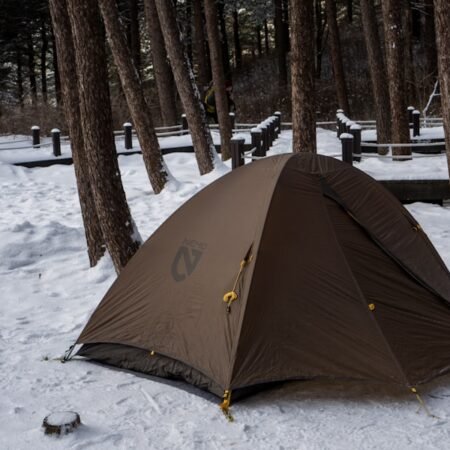When it comes to outdoor adventures, having the right gear is essential for a safe and enjoyable experience. However, even the most durable and well-made outdoor gear can succumb to wear and tear over time. This is where repair kits come in handy.
Repair kits for tents and sleeping pads are essential tools for outdoor enthusiasts, as they allow you to quickly and easily fix any damage to your gear while on the go. Whether you’re camping in the wilderness or embarking on a multi-day hiking trip, having a reliable repair kit can make all the difference in ensuring that your outdoor adventures go smoothly. Not only do repair kits provide a quick fix for damaged gear, but they also offer peace of mind knowing that you can address any issues that may arise during your outdoor excursions.
From torn tents to punctured sleeping pads, having the right repair kit on hand can save your outdoor adventures from being cut short due to gear malfunctions. Additionally, using repair kits to fix your gear can save you money in the long run by extending the lifespan of your outdoor equipment and preventing the need for costly replacements.
Key Takeaways
- Repair kits are essential for maintaining and extending the lifespan of your outdoor gear.
- Choose the right repair kit for your tent and sleeping pad based on the type of material and the specific repair needed.
- Follow a step-by-step guide for repairing torn tents and punctured sleeping pads to ensure a successful repair.
- Regular maintenance and proper storage can help prevent damage to your outdoor gear and extend its lifespan.
- Avoid common mistakes when using repair kits, such as using the wrong adhesive or not allowing enough time for the repair to set.
How to Choose the Right Repair Kit for Your Tent and Sleeping Pad
When it comes to choosing the right repair kit for your tent and sleeping pad, there are a few key factors to consider. First and foremost, you’ll want to ensure that the repair kit is compatible with the materials used in your gear. For example, if your tent is made of nylon, you’ll want a repair kit that includes patches and adhesive specifically designed for nylon fabric.
Similarly, if your sleeping pad is made of vinyl or PVC, you’ll want a repair kit that includes patches and adhesive suitable for these materials. In addition to material compatibility, it’s important to consider the type of damage you may encounter while outdoors. Some repair kits are designed specifically for patching tears and holes, while others may also include tools for repairing zippers, seams, and other common issues.
Consider the types of repairs you’re most likely to encounter based on the activities you engage in, and choose a repair kit that provides the necessary tools and materials to address these issues. Finally, consider the portability and ease of use of the repair kit. Look for a compact and lightweight kit that can easily be stashed in your backpack or gear bag, and opt for one that includes clear instructions for using the included materials.
Step-by-Step Guide to Repairing Torn Tents and Punctured Sleeping Pads
Once you’ve chosen the right repair kit for your tent and sleeping pad, it’s important to familiarize yourself with the process of using the kit to make repairs. For torn tents, start by cleaning the damaged area with a mild soap and water to remove any dirt or debris. Once the area is clean and dry, apply a patch from the repair kit using the included adhesive, following the manufacturer’s instructions for best results.
For larger tears or holes, you may need to use a combination of patches and adhesive to ensure a secure and long-lasting repair. When it comes to punctured sleeping pads, begin by locating the puncture by inflating the pad and listening for any hissing sounds or feeling for escaping air. Once you’ve identified the puncture, clean the area around it with rubbing alcohol and allow it to dry completely.
Apply a patch from the repair kit using the included adhesive, ensuring that it covers the entire punctured area and is firmly pressed into place. After making the repair, allow the adhesive to cure for the recommended amount of time before using your gear again.
Tips for Maintaining and Extending the Lifespan of Your Outdoor Gear
| Repair Kit | Tents | Sleeping Pads |
|---|---|---|
| Patches | 10 | 5 |
| Adhesive | 15ml | 10ml |
| Seam Grip | 20g | 15g |
| Nylon Tape | 2m | N/A |
In addition to using repair kits to fix damage as it occurs, there are several proactive measures you can take to maintain and extend the lifespan of your outdoor gear. First and foremost, proper storage is key to preventing unnecessary wear and tear on your gear. When not in use, store your tent and sleeping pad in a cool, dry place away from direct sunlight and moisture.
This will help prevent mold, mildew, and UV damage that can weaken fabrics and materials over time. Regular cleaning is also essential for maintaining outdoor gear. After each use, take the time to clean and dry your tent and sleeping pad according to the manufacturer’s instructions.
This will help prevent dirt, sweat, and other contaminants from breaking down the materials and causing premature damage. Additionally, consider using protective measures such as ground cloths or footprint pads under your tent to minimize abrasion from rough terrain.
Common Mistakes to Avoid When Using Repair Kits
While repair kits can be incredibly useful for fixing damaged outdoor gear, there are some common mistakes that outdoor enthusiasts should be mindful of when using these kits. One of the most common mistakes is failing to properly clean and prepare the damaged area before applying patches or adhesive. Without a clean surface, patches may not adhere properly or could come loose over time, leading to ineffective repairs.
Another common mistake is using too much adhesive when making repairs. While it may be tempting to apply extra adhesive for added security, using too much can actually weaken the bond between the patch and the damaged area. Follow the manufacturer’s instructions for applying adhesive carefully, and avoid overdoing it.
The Benefits of DIY Repairs for Outdoor Gear
In addition to saving money on costly replacements and extending the lifespan of your gear, there are several other benefits to making DIY repairs for outdoor gear. For one, being able to quickly address damage while on an outdoor adventure can prevent disruptions to your trip and ensure that you can continue enjoying your time in nature without having to cut things short due to gear malfunctions. Furthermore, making DIY repairs fosters a sense of self-sufficiency and resourcefulness that can be empowering for outdoor enthusiasts.
Knowing that you have the skills and tools to address any issues that may arise with your gear can boost confidence and make outdoor adventures even more rewarding.
Where to Find Quality Repair Kits and Resources for Outdoor Gear Maintenance
When it comes to finding quality repair kits and resources for maintaining outdoor gear, there are several options available to outdoor enthusiasts. Many outdoor retailers carry a variety of repair kits designed specifically for tents, sleeping pads, and other gear. These kits often include patches, adhesives, sealants, and other tools necessary for making repairs in the field.
In addition to retail options, there are also numerous online resources available for finding quality repair kits and learning how to use them effectively. Outdoor gear manufacturers often provide detailed instructions and tutorials on their websites for using their repair kits, as well as tips for maintaining gear to prevent damage in the first place. In conclusion, having a reliable repair kit for tents and sleeping pads is essential for any outdoor enthusiast looking to make the most of their adventures while ensuring their gear remains in top condition.
By understanding the importance of repair kits, choosing the right kit for your specific needs, learning how to make effective repairs, maintaining your gear properly, avoiding common mistakes, reaping the benefits of DIY repairs, and knowing where to find quality resources, you can ensure that your outdoor gear remains in top condition for years to come. With the right tools and knowledge at your disposal, you can confidently tackle any damage that may occur during your outdoor excursions and continue enjoying nature without interruption.
FAQs
What are repair kits for tents and sleeping pads?
Repair kits for tents and sleeping pads are essential tools for outdoor enthusiasts to fix any damage or punctures that may occur during their adventures. These kits typically include patches, adhesives, and tools needed to repair tears, holes, or leaks in tents and sleeping pads.
Why are repair kits important for outdoor adventures?
Repair kits are important for outdoor adventures because they allow adventurers to quickly and effectively fix any damage to their tents and sleeping pads, ensuring that they can continue their trip without interruptions. This can be crucial, especially in remote or wilderness areas where access to professional repair services may be limited.
What should a good repair kit for tents and sleeping pads include?
A good repair kit for tents and sleeping pads should include patches, adhesives, and tools specifically designed for repairing the materials used in tents and sleeping pads. It should also include instructions for proper use and repair techniques.
How do you use a repair kit for tents and sleeping pads?
To use a repair kit for tents and sleeping pads, start by identifying the damage and cleaning the area to be repaired. Then, follow the instructions provided in the repair kit to apply the appropriate patches and adhesives to fix the damage. It’s important to allow sufficient time for the repairs to set and dry before using the tent or sleeping pad again.
Are there different types of repair kits for tents and sleeping pads?
Yes, there are different types of repair kits for tents and sleeping pads, each designed for specific materials and purposes. For example, there are repair kits specifically for nylon tents, vinyl sleeping pads, and other materials commonly used in outdoor gear. It’s important to choose a repair kit that is compatible with the materials you need to repair.













